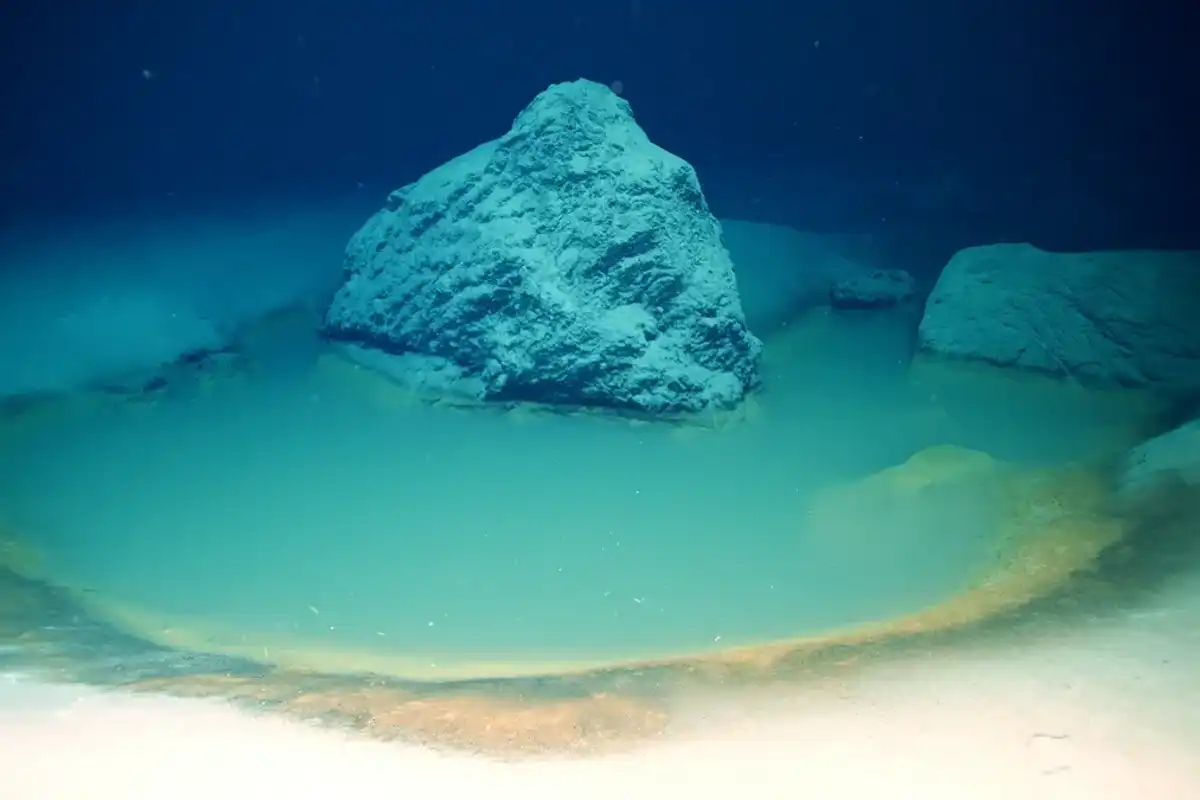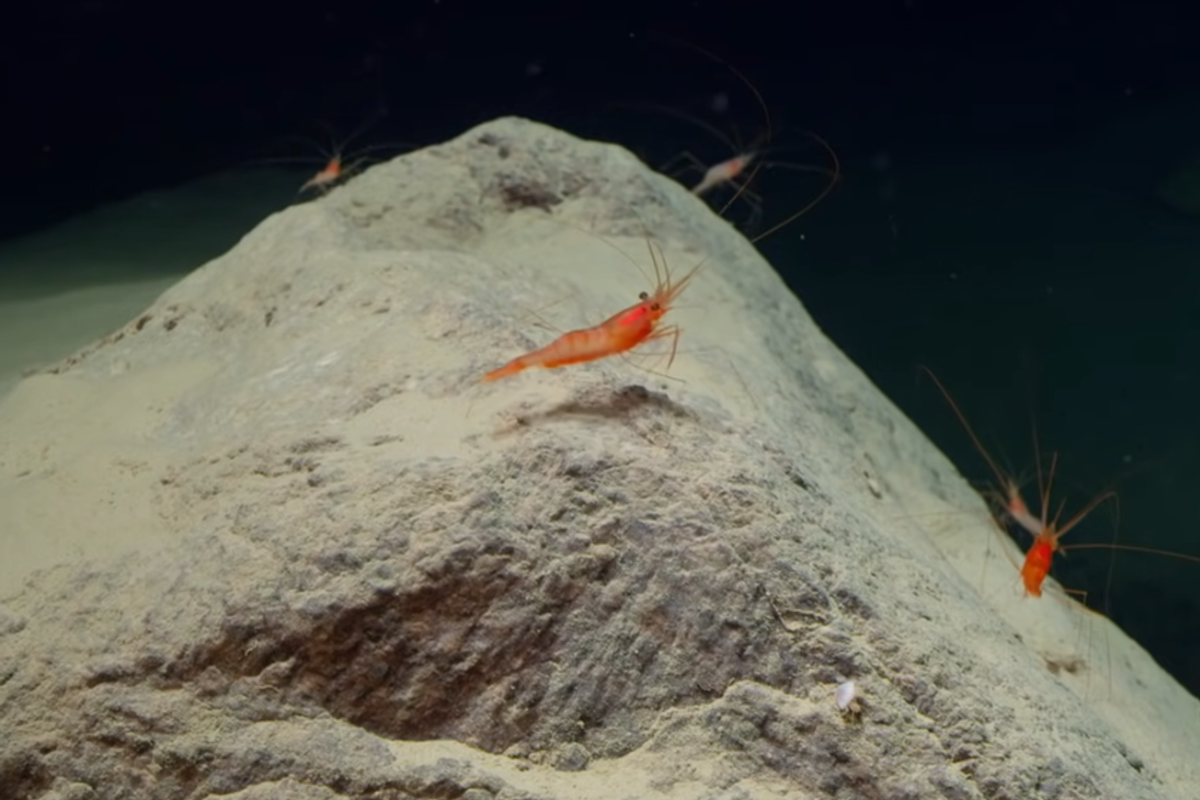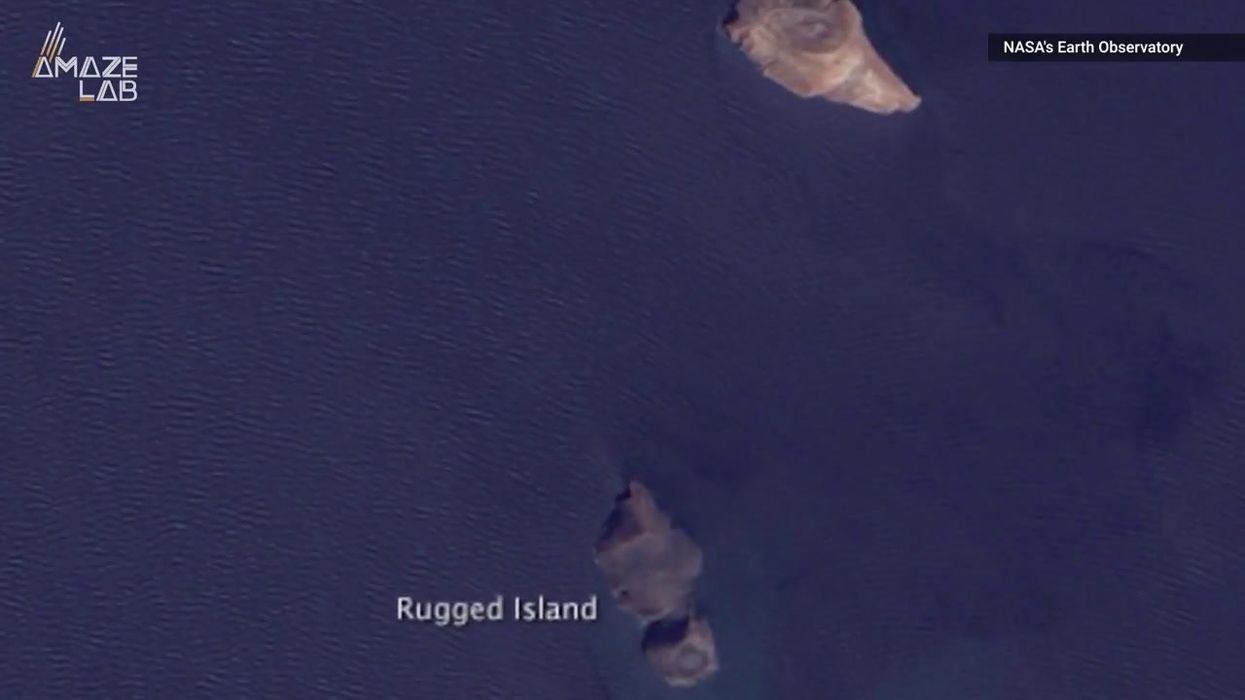Science & Tech
Harriet Brewis
Jul 08, 2025
New Island Forms in the Red Sea in Just 4 Days!
ZMG - Amaze Lab / VideoElephant
The darkest depths of the Red Sea could shed light on the origins of life itself, thanks to a stunning discovery made by scientists.
A team of researchers at the University of Miami hit the bottom of the narrow sea, which lies between the Arabian Peninsula and Africa, and were met by dense, salty lakes known as “death pools”.
The alarming name is fitting given that these are among the most extreme environments on Earth.
The rare pools, which form on the seafloor, are hypersaline (meaning unimaginably salty) and contain zero oxygen.
Indeed, they are so inhospitable, that any animal that strays into their briny waters is immediately stunned or killed.
And yet, despite all of this, they still manage to teem with living microbes – a fact that could offer insights into how life on our planet began, and how beings could evolve on water-rich worlds beyond our own.
"Our current understanding is that life originated on Earth in the deep sea, almost certainly in anoxic — without oxygen — conditions," Sam Purkis, a professor of marine geosciences at the University of Miami, who led a study into the findings, told Live Science.
"Deep-sea brine pools are a great analogue for the early Earth and, despite being devoid of oxygen and hypersaline, are teeming with a rich community of so-called 'extremophile' microbes.
“Studying this community hence allows a glimpse into the sort of conditions where life first appeared on our planet, and might guide the search for life on other 'water worlds' in our solar system and beyond."
Discovering an Underwater Lake 6000 Feet Deep www.youtube.com
If that weren’t enough, the pools could also yield microbial discoveries that could lead to the development of novel medicines, Purkis added.
"Molecules with antibacterial and anticancer properties have previously been isolated from deep-sea microbes living in brine pools," he explained.
Only a few dozen deep-sea brine pools have been discovered across the world, ranging in size from a few thousand square feet to roughly a square mile (2.6 square kilometres), according to Live Science.
Furthermore, only three bodies of water are known to host these rare pools: the Gulf of Mexico, the Mediterranean Sea and the Red Sea.
The Red Sea has the highest number of these lakes, which are thought to originate from dissolving pockets of minerals which were deposited during the Miocene epoch (around 23 million to 5.3 million years ago) when the region’s sea levels were lower than they are today.
Until 2020, all known Red Sea brine pools were located at least 15.5 miles (25 kilometres) offshore.
However, that year, Purkis and his colleagues discovered the first such pools in the Gulf of Aqaba, a northern pocket of the Red Sea, lying just 1.25 miles (two kilometres) from shore.

The groundbreaking find was made during an expedition run by the exploration organisation OceanX.
This research trip was launched to investigate the Red Sea coastline of Saudi Arabia, "an area which has so far received little attention," Purkis noted.
Using a remotely operated underwater vehicle (ROV), he and his colleagues located the pools 1.1 miles (1.77 kilometres) beneath the surface of the Red Sea, naming them the NEOM Brine Pools after the Saudi development company that funded the research.
The biggest pool measured around 107,000 square feet (10,000 square metres) in diameter, while three smaller pools measured less than 107 square feet (10 square metres) in diameter.
"At this great depth, there is ordinarily not much life on the seabed," Purkis told Live Science.
"However, the brine pools are a rich oasis of life. Thick carpets of microbes support a diverse suite of animals."
Of these, the most interesting "were the fish, shrimp and eels that appear to use the brine to hunt," Purkis said.
Owing to the brine’s lack of oxygen, "any animal that strays into [it] is immediately stunned or killed," he explained. The predators that lurk near the brine then "feed on the unlucky," he added.

The proximity of these pools to the coast means they could have accumulated runoff from land, meaning terrestrial minerals could be mixed into their chemical makeup.
This means they could potentially serve as unique archives preserving traces of tsunamis, floods and earthquakes in the region spanning thousands of years.
Core samples of sediment collected from the newfound brine pools "represent an unbroken record of past rainfall in the region, stretching back more than 1,000 years, plus records of earthquakes and tsunami," Purkis said.
His team’s findings suggest that in the past 1,000 years, major floods from serious rain "occur about once every 25 years, and tsunamis [take place] about once every 100 years."
These conclusions regarding the risk of tsunamis and other natural disasters may offer "very important lessons for the massive infrastructure projects that are presently being built on the coastline of the Gulf of Aqaba," Purkis warned.
"Whereas the coastline of the Gulf of Aqaba has traditionally been sparsely populated, it is now urbanising at an astounding rate."
In the future, "we aim to work with the other countries that border the Gulf of Aqaba to widen the assessment of earthquake and tsunami risk," Purkis said.
He and his colleagues further hope to return to the brine pools “with more sophisticated coring equipment to try to extend our reconstruction back beyond 1,000 years, deeper into antiquity."
This article was originally published on 6 September 2024
Why not read...
AI would sacrifice humans to avoid being replaced
Strange structures found lurking beneath Antarctic ice
Sign up for our free Indy100 weekly newsletter
Have your say in our news democracy. Click the upvote icon at the top of the page to help raise this article through the indy100 rankings
Top 100
The Conversation (0)














